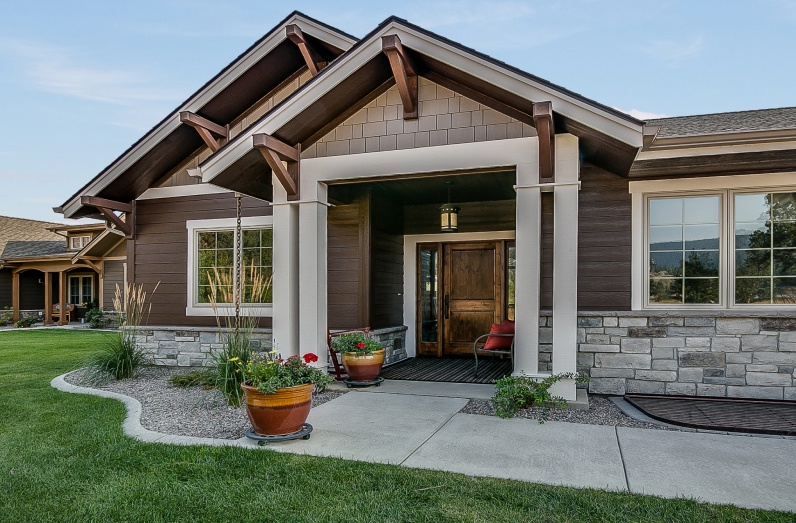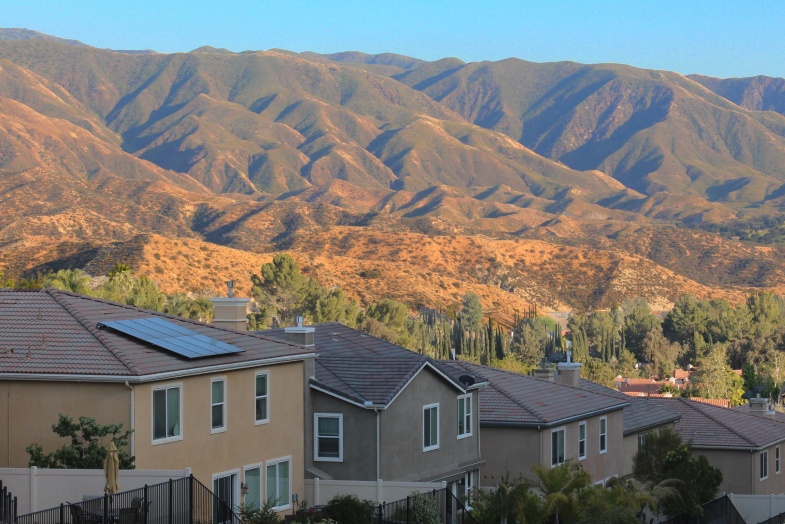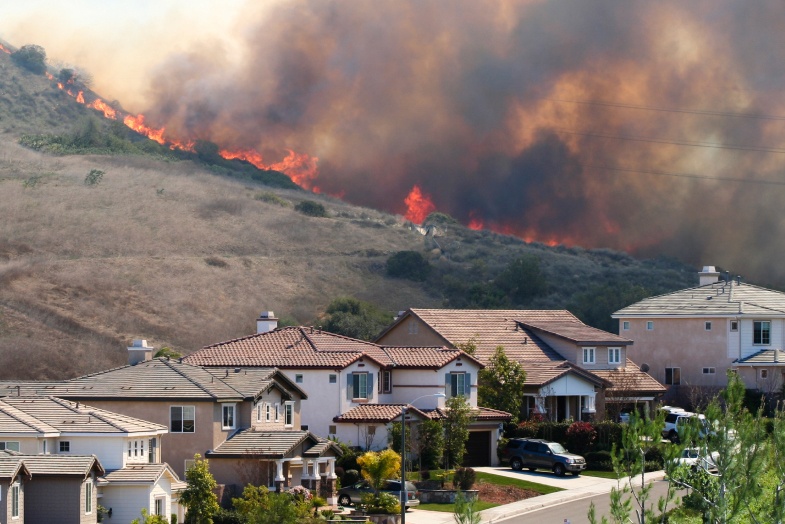Prepare Your Home to Survive Wildfires
“Your Home Can Survive a Wildfire,” narrated by Dr. Jack Cohen, will show you how your home can survive a wildfire.
Watch Now
Understanding Wildfire
Protection Steps
Step 1
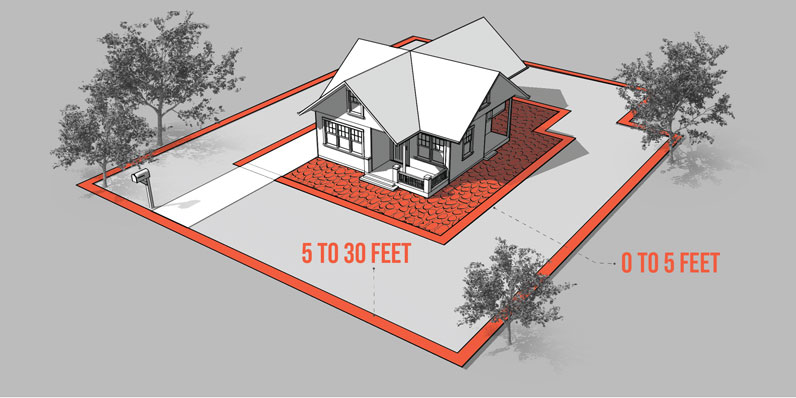
Plant and Maintain Wildfire-Resistant Landscaping
Reduces the chance of flames or embers igniting vegetation near your home, creating a defensible space that slows fire spread and increases your home’s survivability.
Step 2
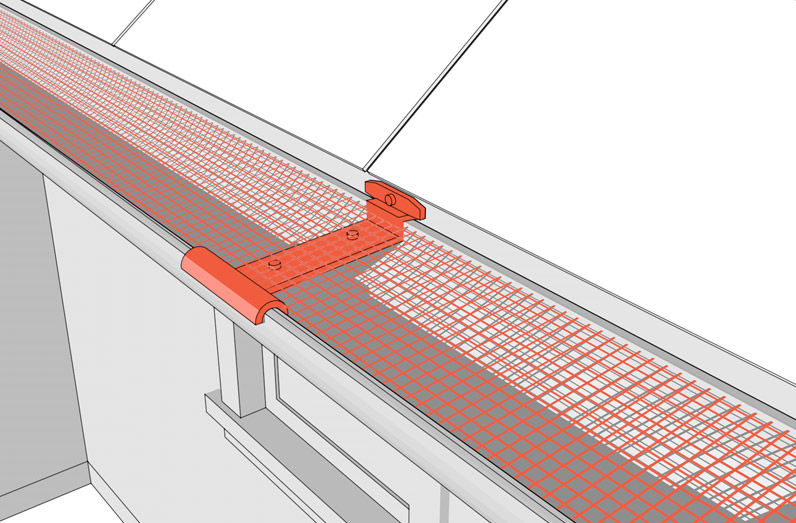
Install non-combustible (metal) leaf guards over gutters
Reduces the chance of embers igniting leaves, pine needles, sticks, or other debris trapped in the gutters.
Step 3
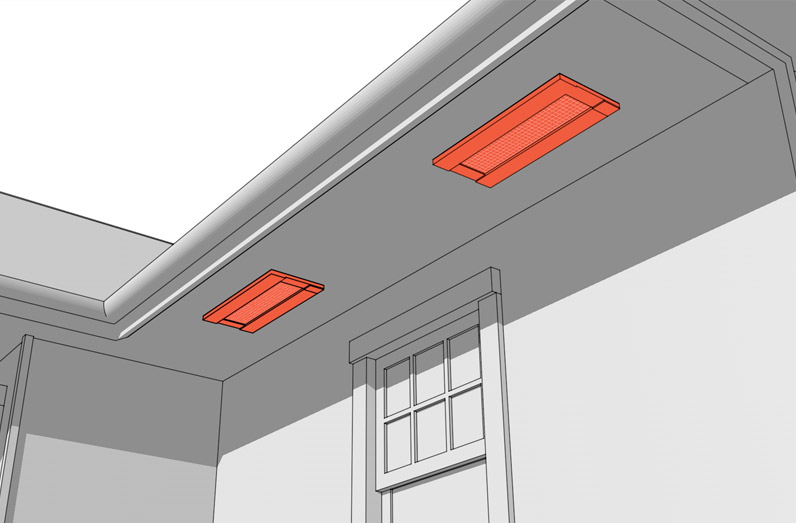
Protect eaves, overhangs, and soffits
Reduces ember ignition potential in the attic or walls with noncombustible materials or by protecting an opening with screening to block ember entry.
Step 4
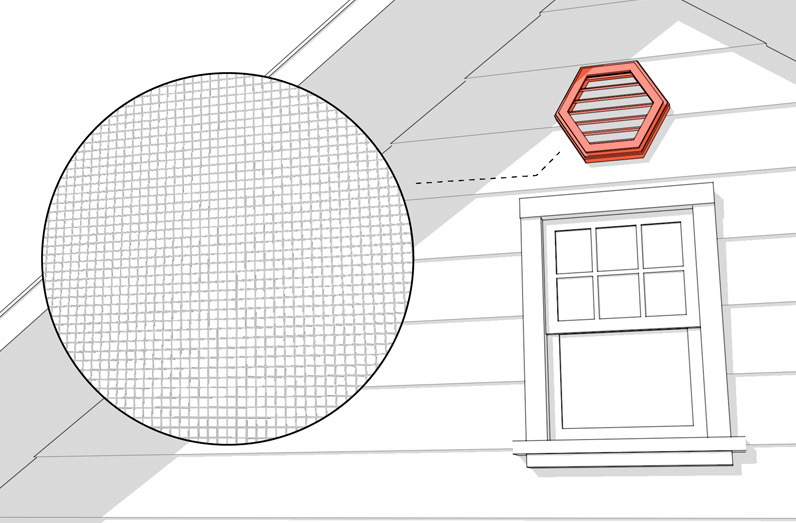
Cover vents with wire mesh
Blocks embers from entering and spreading fires to the interior of the home.
Step 5
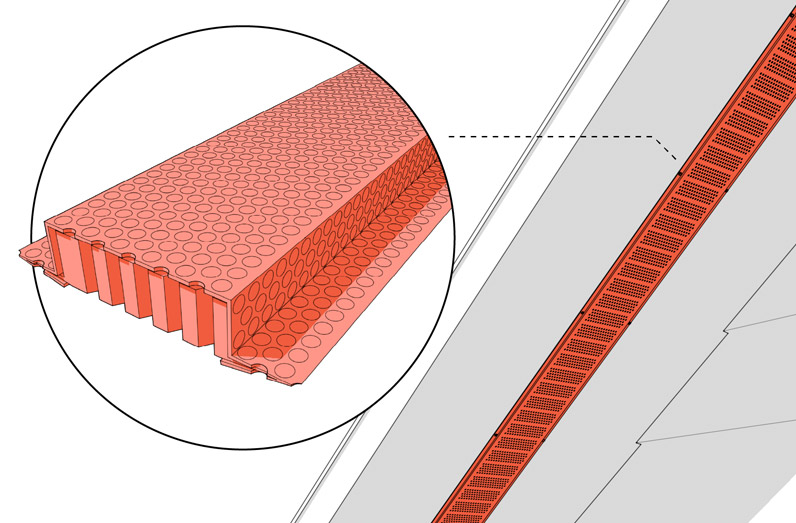
Replace non-metal vent materials
Prevents the melting, ignition, weakening, or disintegration of components essential for blocking ember and flame entry into the house.
Step 6
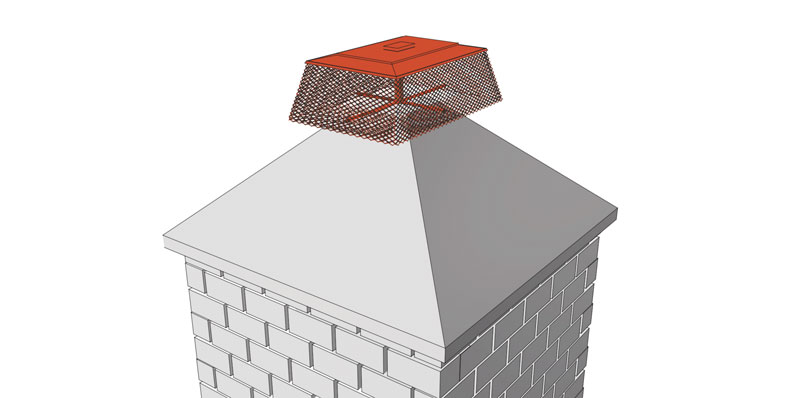
Install a Spark Arrestor for Chimneys and Stovepipes
Prevents embers from entering or escaping the chimney and igniting nearby vegetation or structures, reducing the risk of wildfire spread and home ignition.
Step 7
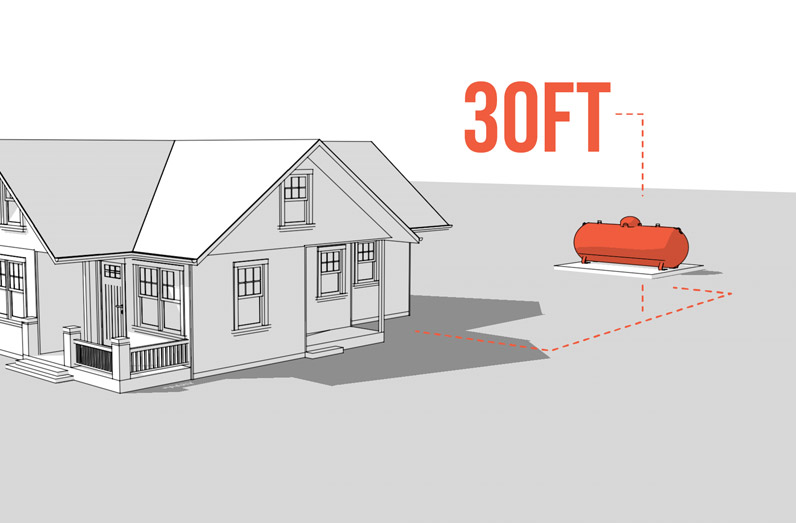
Place fuel tank 30 feet away
Protects the home from potential explosions due to fuel tank ignition.
Step 8
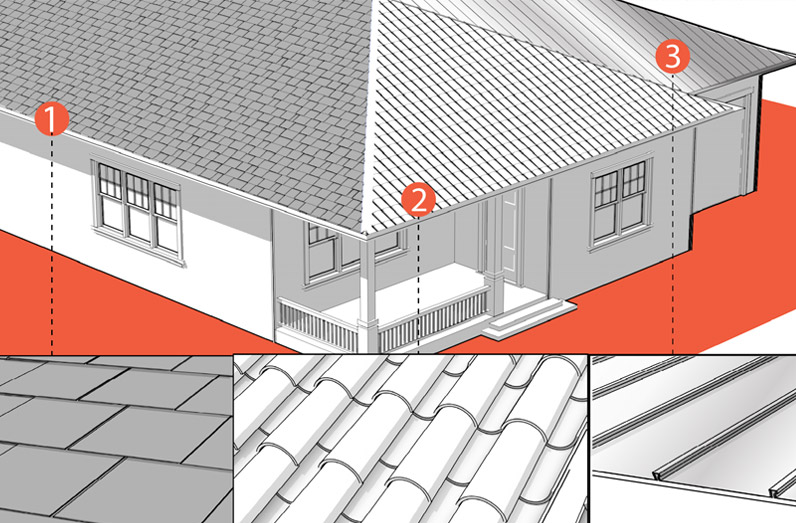
Install a fire-resistant roof cover
Reduces potential for home ignition caused by embers and other burning debris landing on the roof.
Step 9
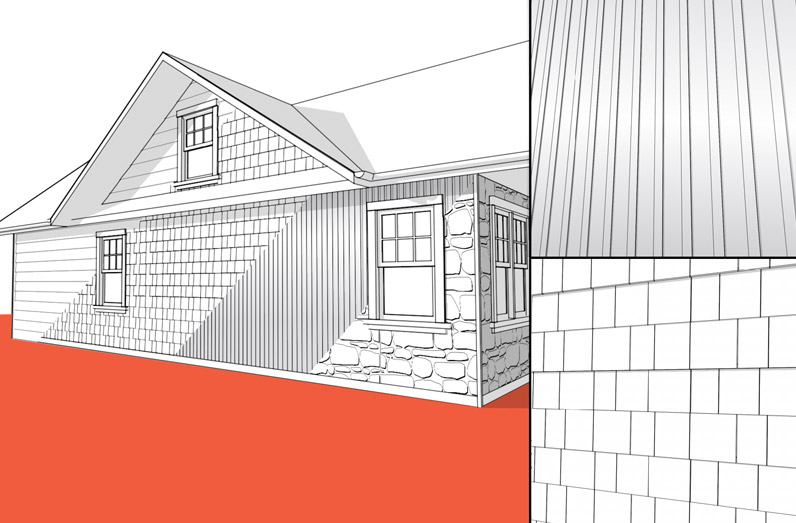
Upgrade to noncombustible siding
Prevents exterior house walls from igniting due to radiant and convective wildfire heat.
Step 10
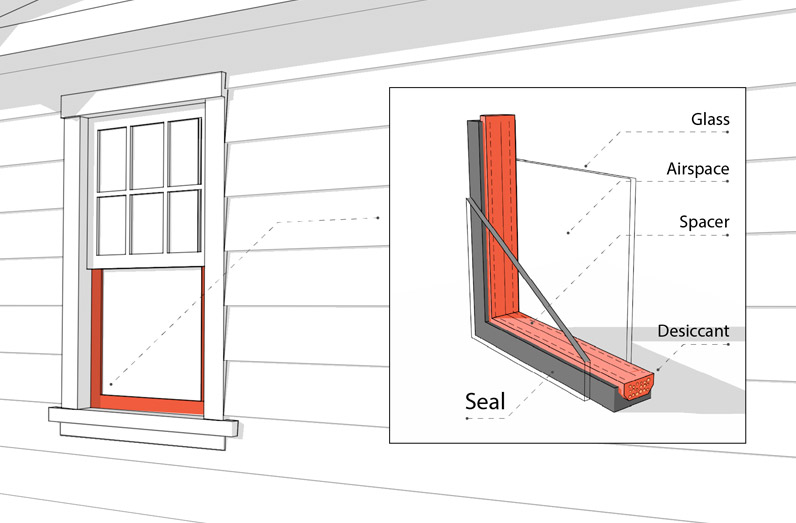
Upgrade to heat and flame-resistant windows
Reduces the chance of window breakage that could lead to ember and flame entry into the home.
Step 11
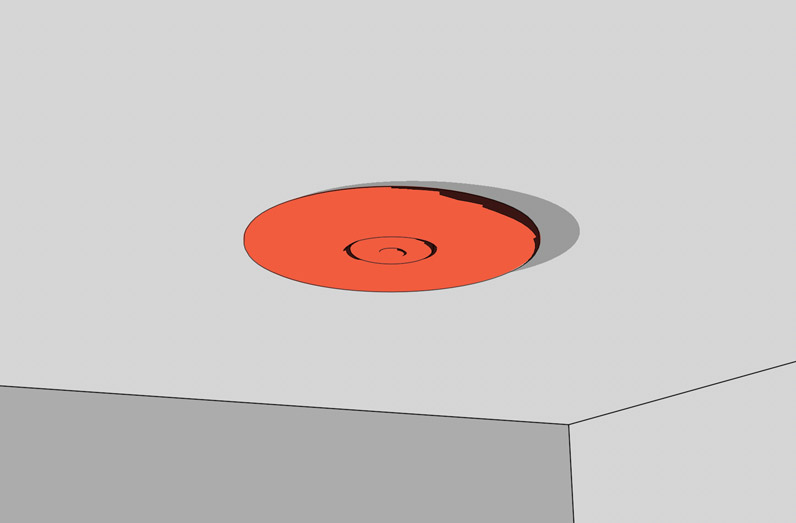
Install residential house sprinklers
Prevents spot fires from wildfire embers entering through openings while also protecting against indoor fires like cooking accidents, candles, or electrical issues.
CHOOSE A WILDFIRESTRONG HOME
Follow the steps below when building or buying your home.
Wildfire Resilience Checklist
Review these considerations with your real estate agent, home inspector, contractor, or other trusted advisor if the home is likely to experience a wildfire.
1
Is the home subject to building codes or land use ordinances that incorporate wildfire safety measures?
2
Is the home located in or near a forest or an area with dense vegetation?
3
Has the home experienced wildfires in the past?
4
Is the home on a slope where fire travels faster?
5
Are the neighboring homes fire-resistant?
6
Does the community have the infrastructure (including roads and water supplies that can be used by firefighters) to respond to a wildfire?
If you answered yes to questions 1-4 or no to questions 5 and 6, speak with a qualified, licensed engineer, inspector, or local code official to determine the best course of action to protect your home from disasters OR consider a home in another location.
Fill & Print Checklist1
The construction materials used on the home (e.g., roof coverings, siding, and fencing) are made of non-combustible or fire-resistant materials.
- Concrete, fiber-cement panels or siding, stucco, masonry, metal, and fire-retardant-treated wood siding or panels are recommended for the exterior walls.
- The most fire-resistant roof coverings include asphalt fiberglass composition shingles, concrete, and flat/barrel-shaped tiles (Class A).
- Shutters should be fire-resistant.
- Multi-pane windows or tempered safety glass are good options compared to annealed, ceramic, and plastic.
- Metal window frames are recommended over wood.
- Exterior doors should be metal or solid wood with an adequate fire rating.
- Avoid using a wooden garage door, especially if it does not have a solid core.
2
Decks, porches, and fences are made of non-combustible or fire-resistant materials.
3
There is a spark arrestor in each chimney or stovepipe to prevent large embers from escaping (or entering).
4
Eaves, soffits, and vents are protected from wildfire.
5
There are no overhangs or minimal overhangs, as this can mitigate soffit fire risks and the potential for trapping embers and hot gasses.
6
There is fire-resistant and non-combustible landscaping and defensible space within 100 feet of the home.
- Immediate Zone (0-5 feet from the home)
- Intermediate Zone (5-30 feet from the home)
- Extended Zone (30-100 feet from the home)
7
Utility and equipment connections are underground.
- If utility and equipment connections aren’t underground, gaps and penetrations in exterior walls and roofs are sealed with fire-resistant materials.
8
The home has residential fire sprinklers.
- If so, ask your insurance professional to see if you qualify for a discount.
Depending on the age of the home, you may want to undertake certain structural retrofits and upgrades at the time of purchase. Wildfire-specific options include:
1
Installing a fire-resistive roof covering.
2
Replacing non-metal vent materials.
3
Covering attic vents, crawl space vents, vents in enclosures below decks, and chimneys with wire mesh.
4
Installing non-combustible (metal) leaf guards over gutters.
5
Upgrading to noncombustible siding.
6
Upgrading to residential fire sprinklers.
7
Ensuring fuel storage vessels are adequately distanced from the home.
8
Protecting eaves, overhangs, and soffits with fire-resistant materials.
9
Upgrading to heat- and flame-resistant windows.
Maintain your home to keep it ready for a wildfire by creating a defensible space of up to 100 feet around the home by:
1
Immediate Zone (0-5 feet from the home)
2
Cleaning roofs and gutters of dead leaves, debris, and pine needles.
3
Replacing or repairing any loose or missing shingles, or roof tiles.
4
Reducing embers that could pass through vents in the eaves by installing ⅛ inch metal mesh screening.
5
Cleaning debris from exterior attic vents and installing ⅛ inch metal mesh screening to reduce embers.
6
Covering the underside of decks and crawl spaces with non-combustible materials or metal mesh to prevent the accumulation of combustible debris and slow the entry of embers, especially if your home is elevated above grade.
7
Repairing or replacing damaged or loose window screens and any broken windows.
8
Moving any flammable material away from wall exteriors (e.g., mulch, flammable plants, leaves and needles, firewood piles, etc.) and removing anything stored underneath decks or porches.
- Do not store propane grills, propane cylinders, or other flammable liquids next to your home.
9
Intermediate Zone (5-30 feet from the home)
10
Clearing vegetation from under large stationary propane tanks.
11
Creating fuel breaks with driveways, walkways/paths, patios, and decks.
12
Keeping lawns and native grasses mowed to a height of four inches.
13
Removing ladder fuels (vegetation under trees) so a surface fire cannot reach the crowns.
14
Pruning trees up to 6-10 feet from the ground.
- For shorter trees, don’t exceed ⅓ of the overall tree height.
15
Spacing trees with a minimum of 18 feet between crowns, increasing the distance with the percentage of slope.
16
Planning tree placement to ensure the mature canopy is no closer than 10 feet from the edge of the home.
17
Limiting trees and shrubs to small clusters of a few each to break up the continuity of the vegetation across the landscape.
18
Extended Zone (30-100 feet from the home)
19
Disposing of heavy accumulations of ground litter or debris.
20
Removing dead plant and tree materials.
21
Removing small conifers growing between mature trees.
22
Removing vegetation next to storage sheds or other outbuildings within this area.
- Trees 30 to 60 feet from the home should have at least 12 feet between canopy tops; trees 60 to 100 feet from the home should have at least 6 feet between the canopy tops.
- The distances listed for crown spacing are suggested based on NFPA 1144. However, the crown spacing needed to reduce crown fire potential could be significantly greater due to slope, the species of trees involved, and other site-specific conditions. Check with your local forestry professional to get advice on what is appropriate for your property.
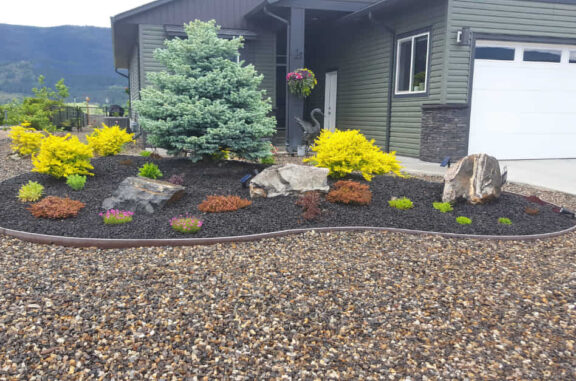
Get Our WildfireStrong Checklist
How prepared is your home? Download our WildfireStrong Checklist to start evaluating your home and identifying mitigation opportunities.
Download
WildfireStrong Kids
It’s never too early to learn about wildfire safety and prevention! Visit WildfireStrong Kids for resources to help them understand the importance of taking small steps around the house when it comes to reducing wildfire risks.
Visit